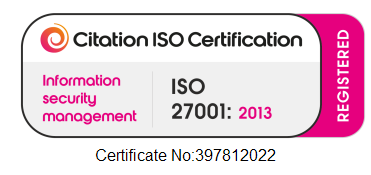.png)
In every organisation, communication is the lifeline that keeps teams aligned and operations running smoothly. But when inboxes overflow and chat messages pile up, how do you make sure critical updates actually get seen? The answer lies in desktop alerts - instant pop-up notifications that deliver the right message, to the right people, at exactly the right time.
Whether it’s a company-wide announcement, a cybersecurity alert, or an urgent IT message, desktop alerts ensure your employees stay informed without missing a beat. Let’s explore how tools like Heed’s desktop alerts are transforming the way internal communications work.
At a Glance
Table of Contents
.png)
What desktop alerts are (and why they work)
A desktop alert is a real-time notification that appears on an employee’s computer screen. It cuts through the clutter of emails, chats and meetings, ensuring time-sensitive messages are seen immediately.
Unlike standard notifications or emails, desktop alerts deliver high visibility, guaranteed delivery, and often include tracking metrics so comms teams can confirm who has read the message.
In Heed, desktop alerts can be customised with your branding, images, call-to-action buttons and dynamic content - giving businesses a flexible way to reach employees wherever they’re working.
The problem with traditional communication channels
Most companies rely heavily on email for internal announcements, but let’s face it, inboxes are overflowing. Important updates about policy changes, outages or security risks often go unnoticed.
Chat tools like Teams or Slack are great for collaboration, but they weren’t built for critical alerts. Messages quickly move out of view, and there’s no way to guarantee delivery or acknowledgement.
When speed and visibility matter, traditional channels simply don’t cut it. Desktop alerts bridge that gap by interrupting workflows (in a good way) to ensure messages get seen.
How desktop alerts improve employee engagement
Desktop alerts aren’t just about emergencies. They’re a powerful tool for engagement and awareness, too.
By targeting specific departments or user groups, comms teams can send relevant updates without spamming everyone. For instance:
- HR teams can share policy reminders or wellbeing updates.
- IT can notify staff of system maintenance or cybersecurity threats.
- Leadership can broadcast announcements that align teams around company goals.
Used strategically, alerts become a two-way engagement tool, not just a one-way broadcast. With read receipts, analytics and scheduling features, you can refine your communication strategy over time.
The benefits of using Heed desktop alerts
Heed’s Desktop Alerts feature is built for organisations that value clarity, speed and visibility in internal comms.
Here’s why teams choose Heed:
- Instant visibility: Alerts appear directly on screens, bypassing the clutter of inboxes and chat apps.
- Targeted delivery: Send alerts to specific teams, offices or individuals.
- Custom branding: Match alerts to your company’s tone, logo and colours.
- Data-driven reporting: Track open rates, clicks and acknowledgements to measure engagement.
- Multi-channel flexibility: Combine desktop alerts with screensavers, digital signage and newsletters for full-spectrum comms.
Heed’s platform empowers internal communicators to deliver the right message at the right time, boosting both compliance and employee awareness.
Practical ways to use desktop alerts in your organisation
There are dozens of creative ways to use desktop alerts. Here are a few that consistently drive engagement and ROI.
1. Crisis and emergency communication
When an urgent issue arises; from IT outages to weather warnings - speed matters. Desktop alerts allow you to send instant notifications with clear instructions, ensuring everyone receives critical information without delay.
2. Cybersecurity and compliance reminders
Reminding employees about password updates or phishing awareness via email often goes ignored. A short, branded desktop alert keeps the message visible until it’s acknowledged, ideal for compliance campaigns.
3. Internal announcements and recognition
From celebrating milestones to introducing new hires, desktop alerts add a touch of visibility and excitement to company updates. They help remote and hybrid teams feel connected.
4. Event and training reminders
Got a webinar or training session coming up? Use alerts to nudge employees at just the right moment. You can even include a clickable link to register or join directly.
5. Policy changes and health & safety updates
Desktop alerts are perfect for mandatory updates - HR policies, safety briefings, or procedural changes. They help ensure nothing slips through the cracks.
How to craft effective desktop alerts
It’s not just what you say, it’s how you say it.
Follow these best practices to make sure your alerts get noticed and remembered:
- Keep it short: Aim for a single sentence or two. Employees scan, they don’t read.
- Add visuals: Use icons or logos to draw attention.
- Use strong CTAs: Include a button like Read more or Acknowledge.
- Be consistent: Maintain tone and formatting across all alerts.
- Measure engagement: Use analytics to track who opens and acts on alerts.
The goal is to make alerts informative without feeling intrusive.
Why desktop alerts matter in a hybrid workplace
With remote and hybrid work now the norm, internal communication tools need to bridge physical distance. Employees may be spread across different time zones, devices and platforms but they all share one thing: a screen.
Desktop alerts ensure everyone stays informed, wherever they’re working. They’re especially valuable when employees aren’t checking email or are working in full-screen mode.
In an era where digital noise is constant, Heed’s desktop alerts help organisations cut through the noise and deliver clarity in seconds.
Integrating desktop alerts into your communication strategy
Think of desktop alerts as part of a multi-channel comms ecosystem. They work best when combined with:
- Screensavers for passive awareness campaigns
- Digital signage for on-site employees
- Newsletters for deeper storytelling and updates
Heed’s platform brings all these tools together - giving internal comms teams one simple dashboard to plan, deliver and track engagement across every channel.

.svg)




.svg)
.svg)
.svg)